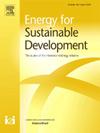Technical and economic analysis for the implementation of photovoltaic systems in agricultural zones of Mexico City: A case study
IF 4.4
2区 工程技术
Q2 ENERGY & FUELS
引用次数: 0
Abstract
Global population growth and industrial expansion intensify demands for water, energy, food, and arable land. At the same time, climate change and land degradation threaten agricultural productivity. By 2050, food production must increase by 60 %, yet projections show that yields may decline by 10 %, which will worsen resource scarcity. This study evaluates Agrivoltaic Systems (APVS) as a sustainable solution for agricultural challenges in Xochimilco, Mexico City. Rural farmers there face energy poverty, aquifer contamination, and reliance on fossil fuels for irrigation. We analyze three scenarios: 1) Business As Usual (BAU), which uses fossil fuel-dependent pumps; 2) APVS-powered electric pumping; and 3) APVS with integrated water treatment. We assess the economic and environmental impacts over the systems' lifespans. Results show that replacing fossil fuel pumps with APVS reduces operational costs by 60–70 %, yielding a net present value (NPV) of $8900 per system and mitigating 12.6 tCO2e annually. While APVS-powered pumping offers clear economic and environmental advantages, integrating water treatment requires initial subsidies to offset high capital costs ($114 million USD for 3500 systems). However, treated water enhances crop quality and market value, aligning with sustainable practices by eliminating agrochemical use. The study demonstrates APVS's scalability, with potential deployment across 3500 chinampas (traditional farms), saving 11 million USD in fuel costs and reducing 44,100 tCO2e annually. This framework supports energy access, climate resilience, and food security by coupling renewable energy with water treatment. The integrated assessment framework developed in this study, combining techno-economic analysis with sustainability metrics and sensitivity testing, provides a replicable model for evaluating renewable energy solutions in contaminated agricultural contexts worldwide, emphasizing policy support to enhance viability. This work underscores APVS as a pathway to decouple agricultural productivity from fossil fuels, fostering economic, health, and environmental co-benefits.
在墨西哥城农业区实施光伏系统的技术和经济分析:一个案例研究
全球人口增长和工业扩张加剧了对水、能源、食物和耕地的需求。与此同时,气候变化和土地退化威胁着农业生产力。到2050年,粮食产量必须增加60%,但预测显示产量可能下降10%,这将加剧资源短缺。本研究评估了农业光伏系统(APVS)作为墨西哥城霍奇米尔科农业挑战的可持续解决方案。那里的农民面临着能源匮乏、含水层污染和依赖化石燃料灌溉的问题。我们分析了三种情景:1)照常营业(BAU),使用依赖化石燃料的泵;2) apvs电动泵送;3)综合水处理的APVS。我们评估了系统寿命期间的经济和环境影响。结果表明,用APVS取代化石燃料泵可降低60 - 70%的运营成本,每个系统的净现值(NPV)为8900美元,每年可减少12.6吨二氧化碳当量。虽然apvs驱动的泵具有明显的经济和环境优势,但整合水处理需要初始补贴来抵消高昂的资本成本(3500个系统需要1.14亿美元)。然而,经过处理的水通过消除农用化学品的使用,符合可持续做法,提高了作物质量和市场价值。该研究证明了APVS的可扩展性,可在3500个chinampas(传统农场)中部署,每年可节省1100万美元的燃料成本,减少44100吨二氧化碳当量。该框架通过将可再生能源与水处理相结合,支持能源获取、气候适应能力和粮食安全。本研究建立的综合评估框架将技术经济分析与可持续性指标和敏感性测试相结合,为全球污染农业环境下的可再生能源解决方案评估提供了一个可复制的模型,强调政策支持以提高可行性。这项工作强调了APVS作为将农业生产力与化石燃料脱钩的途径,促进经济、健康和环境的共同效益。
本文章由计算机程序翻译,如有差异,请以英文原文为准。
求助全文
约1分钟内获得全文
求助全文
来源期刊

Energy for Sustainable Development
ENERGY & FUELS-ENERGY & FUELS
CiteScore
8.10
自引率
9.10%
发文量
187
审稿时长
6-12 weeks
期刊介绍:
Published on behalf of the International Energy Initiative, Energy for Sustainable Development is the journal for decision makers, managers, consultants, policy makers, planners and researchers in both government and non-government organizations. It publishes original research and reviews about energy in developing countries, sustainable development, energy resources, technologies, policies and interactions.
 求助内容:
求助内容: 应助结果提醒方式:
应助结果提醒方式:


